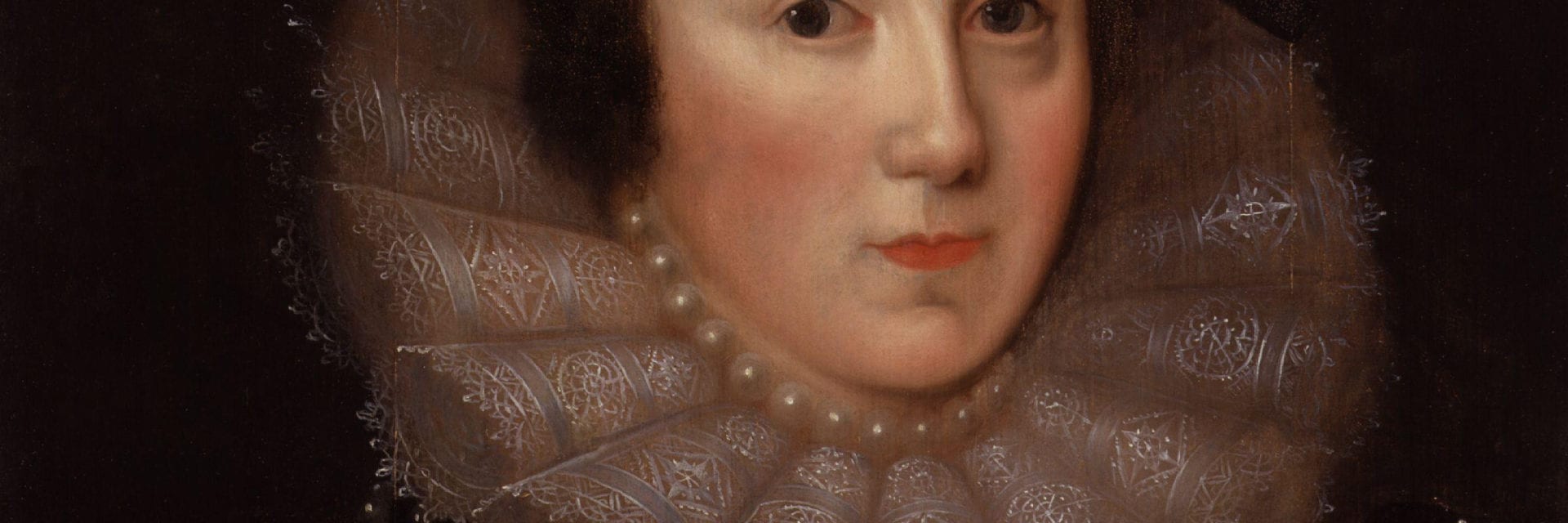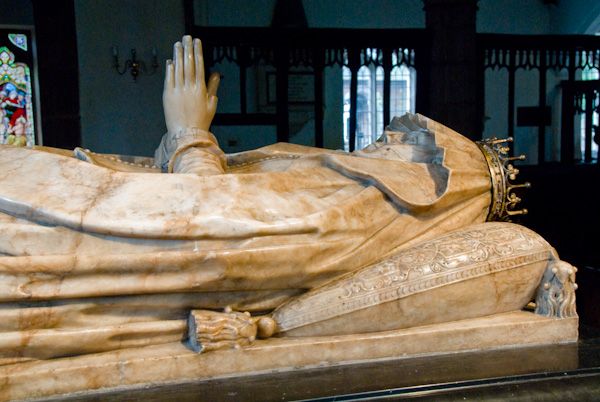

If you enjoyed reading about Anne Dudley, Countess of Warwick I’d now like to introduce you to her younger sister Margaret, who is just as interesting!
Margaret was born on July 7, 1560 at Bedford House, Exeter. Her mother, the former Margaret St John died at Woburn from smallpox when Margaret was about a year old. The little girl was placed in the care of her mother’s younger sister Alice, wife of Edmund Elmes and spent the next seven years at their Manor House in Lilford, Northamptonshire.
An Elizabethan childhood was short and before she was 10 years old Margaret went to join her sister Anne as a Maid of Honour at the Queen’s court.
Margaret married a distant St John cousin, George Clifford, 3rd Earl of Cumberland, on June 24 1577 at St Mary Overies, Southwark in a double wedding with George’s sister Frances to Philip, Lord Wharton in the presence of the Queen.
It hadn’t been exactly love at first sight for the teenage Margaret, but I suppose on paper it made good sense. The couple had two sons, Francis and Robert, and a daughter Anne (the subject of a soon-to-be-published blog post) but sadly the boys died young and the Ear sought solace in the ladies of the court.
Margaret wasn’t prepared to hang around and be humiliated so taking her daughter she upped and left the Clifford home, spending time at her brother’s estate in Cookham and with her widowed sister Anne in her property at Austin Friars. the former priory made even more famous by Thomas Cromwell, Henry VIII’s right hand man.
Like all the women in her family (I like to think it’s those St John genes) Margaret had a love of learning. She was described as a pious, even zealous puritan and well read with a keen interest in alchemy and science. She distilled her own medicines (as did Lady Johanna St John from Lydiard House) and invested in lead mining on the Clifford estates at Craven, experimenting in the smelting of iron with coal.
The entry for Margaret in the Historical Memoirs of the House of Russell – Vol 1 reads as follows:
‘This Margaret Russell, Countess of Cumberland, was endowed with many perfections of mind and body. The was naturally of a high spirit, though she tempered it well by grace; having a very well favoured face, with sweet and quick grey eyes, and of a comely personage. She was of a graceful behaviour, which she increased the more by being civil and courteous to all ranks of people. She had a discerning spirit, both into the disposition of human creatures and natural causes, and into the affairs of the world. She had a great, sharp, natural wit so as there were few worthy sciences but she had some insight into them; for though she had no language but that her own yet were there few books of worth translated into English but she read them … She was dearly beloved by those of her friends and acquaintance that had excellent wits and were worthy and good; so as towards her latter end she would often say, that the kindness of her friends towards her had been one of the most comfortable parts of her life, and particularly of her husband’s two sisters. She was also very happy in the dear love and affection of her eldest and excellent sister, Anne Russell, Countess of Warwick (who being almost thirteen years older than herself, was a kind of mother to her), as well as in that of their middle sister, Countess of Bath for these three sisters in those times were the most remarkable ladies for their greatness and goodness of any three sisters in the kingdom.’
Margaret famously fought her daughter’s corner when George Clifford left his estates to his brother Francis. A tenacious family historian Margaret produced documentary evidence to undermine Francis’s claims to the Clifford estates in the north. Although Margaret’s findings proved insufficient to retain her daughter’s inheritance at the time they later came in good use when Anne Clifford took on the battle.

Anne Clifford’s memorial to mother Margaret, Countess of Cumberland in St Lawrence’s Church, Appleby.
Mother and daughter enjoyed a close relationship. Following Margaret’s death at Brougham Castle on May 24, 1616, her grieving daughter erected a memorial – the Countess Pillar at the gateway to the castle where she last parted from her mother on April 2, 1616.